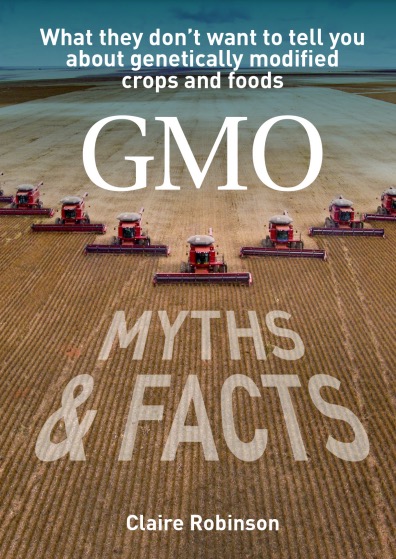Best Practice in the Design of GM Crops
ISIS Special Report
December 2000
Comment on Consultation Document from Advisory Committee on Releases to the Environment (ACRE) of the United Kingdom
Executive Summary (For the full document, see ISIS website www.i-sis.org. To obtain full document plus supplements please send self-addressed stamped envelop and UK£15 to Institute of Science in Society, The October Gallery, 24 Old Gloucester St., London WC1N 3AL, UK)
The ACRE Subgroup on Best Practice in GM crop Design has invited ISIS to comment on a draft "Guidance on Best Practice in the Design of Genetically Modified Crops" www.environment.detr.gov.uk/acre/bestprac/index.htm One of the main 'enabling technologies' considered in the document is the 'control of gene expression', dubbed 'terminator technology'by its critics, that genetic engineers seed or pollen to be sterile. A consultation exercise is simultaneously taking place in the United States by the US Department of Agriculture, on 'terminator' patents jointly owned by the USDA and Delta and Pine Land Company. The USDA is considering commercial development of the technology http://www.usda.gov/agencies/biotech/downloads/paper72000.html
GM crops engineered with terminator technology for seed/pollen sterility are already undergoing UK government-funded 'farm-scale' field trials in the UK. Why has this ACRE consultation not taken place before the massive field trials were approved, especially in view of the serious new hazards introduced by the technology (see below)?
The explicit aim of the UK ACRE Subgroup is to improve the safety of GM crops. The Draft Guidance admits many areas of ignorance and recommends rigorous testing of all new genes and technologies to ensure that they are safe and effective.
However, the Draft Guidance does not consider how the potential needs and benefits offered by the GM crops can be met by developing non-GM crops, or by means of alternative, sustainable agricultural practices with hundreds, if not thousands, of years of safety record behind them. Nor does the Draft Guidance address the socio-economic impacts of corporate control of agriculture through patents on seeds.
On the contrary, ACRE recommends using 'genetic protection systems' that engineer seed sterility to enforce corporate patents as a means of preventing gene transfer from GM crops. ACRE is either attempting to re-introduce a technology that even Monsanto corporation has abandoned as the result of universal rejection and condemnation, or else it is admitting that the transgenes and marker genes are unsafe, and have to be prevented from dispersal. The latter is surely a strong case for stopping GM crop development altogether, particularly, as we have argued, and as admitted by ACRE, the 'biological containment' offered by the technology is ineffective, and introduces serious new hazards.
The 'genetic protection systems' are ineffective on account of the 'leakiness' of genetic control, which is far short of 100%. Furthermore, the technology does nothing to prevent horizontal transfer of the genes. On the contrary, the increased complication of the constructs and consequent structural instability will tend to enhance horizontal gene transfer and recombination. In addition, the technology introduces significant hazards over and above those shared by all GM crops created to-date. First, the barnase enzyme encoded by the gene that makes pollen or ovules sterile is a non-specific RNAse, lethal to all cells, animals and humans included. Second, the recombinase enzyme required to control gene expression has the potential to scramble genes and genomes in unpredictable, harmful ways. Third, the spread of sterility genes (or anther/ovule-lethal genes) will directly threaten food security and biodiversity.
We recommend the following as 'best practice' on GM crop design that ensures safety to health and biodiversity and minimises socioeconomic impacts on farmers.
1. A detailed case for the need and benefit of any GM crop should be presented before it is made.
2. No seed/pollen sterility techniques should be used, and no GM crops engineered with these techniques should be released into the environment.
3. All genes, gene products and gene constructs should be thoroughly assessed for safety before they are introduced.
4. Genes with harmful products, genes and constructs that may enhance horizontal transfer, or have other untoward consequences on genomes and organisms should not be used.
5. All antibiotic resistance marker genes should be eliminated.
6. No crop should be genetically modified to produce pharmaceuticals or industrial chemicals. The best practice is to use plant cell culture under strictly contained conditions.
7. No superfluous sequences, or uncharacterised sequences, should be included in any GMO destined for release into the environment.
8. No GM crop should be released into the environment unless it can be thoroughly identified and characterised, using the state-of-the-art molecular methods, with respect to unintended effects, as well as genetic uniformity and stability of the insert(s) for at least 5 successive generations.
9. Transformations should be precisely targeted as well as stable.
10. All patents on GM seeds should be revoked and banned.
11. Research on the safe design and construction of GM crops should be carried out by independent scientists, not subjected to any pressure to commercialise prematurely.
Dr. Mae-Wan Ho
Dr. Joe Cummins
Dr. Jeremy Bartlett









